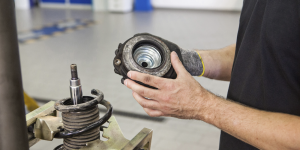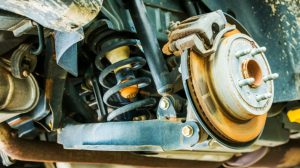Suspension noises can be more than just an annoyance — they often signal underlying issues that could compromise your vehicle’s safety and performance. While many drivers instinctively blame shocks or struts, springs themselves can be the culprits behind certain suspension sounds. This article delves into how to identify spring-related suspension noises and when to consider replacing your springs.

Understanding Suspension Springs
Springs are integral to a vehicle’s suspension system, designed to absorb impacts from road irregularities, maintain ride height, and ensure tire contact with the road. There are several types of springs used in automotive suspensions:
-
Coil Springs: Spiral-shaped springs that compress and expand to absorb shocks.
-
Leaf Springs: Long, flat springs that flex to absorb road shocks, commonly used in trucks.
-
Torsion Bars: Metal bars twisted to provide spring action, often used in off-road vehicles.
Each type of spring plays a crucial role in the vehicle’s handling and comfort. Over time, springs can wear out or become damaged, leading to various suspension noises.
Common Suspension Noises and Their Causes
Not all suspension noises are related to springs. Here’s a breakdown of common sounds and their typical sources:
| Noise Type | Possible Causes |
|---|---|
| Clunking/Knocking | Worn control arm bushings, ball joints, sway bar links |
| Squeaking/Squealing | Dry or worn-out bushings, lack of lubrication |
| Rattling | Loose or worn-out components like strut mounts or shock absorbers |
| Grinding/Metal-on-Metal | Worn brake pads, damaged brake rotors, wheel bearings |
| Whining/Humming | Worn wheel bearings |
While springs can contribute to some of these noises, it’s essential to consider all components of the suspension system during diagnosis.
Diagnosing Spring-Related Noises
If you suspect your springs are causing suspension noises, consider the following diagnostic steps:
-
Visual Inspection: Look for any visible signs of damage such as cracks, corrosion, or misalignment in the springs.
-
Bounce Test: Push down on each corner of the vehicle and observe how it rebounds. If the vehicle continues to bounce after releasing, it may indicate worn-out springs.
-
Listen Carefully: Pay attention to the type of noise. A creaking or groaning sound could suggest a spring issue, especially if it’s accompanied by visible wear.
-
Check for Proper Seating: Ensure that the springs are correctly seated in their mounts and not displaced.
-
Consult a Professional: If you’re unsure, it’s advisable to have a certified mechanic inspect the suspension system.
When to Replace Your Springs
Springs don’t have a fixed lifespan and can last anywhere from 50,000 to 100,000 kilometers, depending on driving conditions and maintenance. However, certain signs indicate it might be time for replacement:
-
Visible Damage: Cracks, corrosion, or broken coils.
-
Uneven Ride Height: If one corner of the vehicle sits lower than the others.
-
Excessive Bouncing: If the vehicle continues to bounce after hitting a bump.
-
Sagging: If the vehicle appears to be sagging under its weight.
Replacing worn-out springs promptly ensures optimal vehicle handling and safety.
Maintenance Tips to Extend Spring Life

To maximize the lifespan of your suspension springs:
-
Regular Inspections: Periodically check for signs of wear or damage.
-
Keep Springs Clean: Remove debris and dirt that can cause corrosion.
-
Avoid Overloading: Do not exceed the vehicle’s maximum load capacity.
-
Address Issues Promptly: Replace worn-out components like bushings and shocks to prevent undue stress on the springs.
Conclusion
Suspension noises can be indicative of various issues within the system. While springs are often overlooked, they play a vital role in vehicle comfort and safety. Regular maintenance and prompt attention to unusual noises can help identify spring-related problems early.
For those in need of high-quality suspension springs and components, consider visiting Buy Springs & Components online. They offer a wide range of products to suit various vehicle needs.